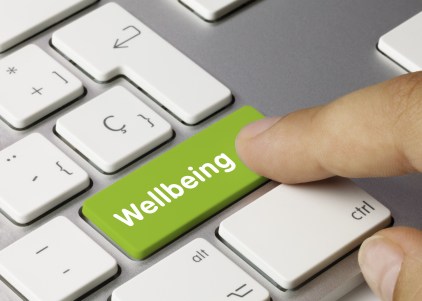Preventing and Helping Employees Deal with Burnout Is Now a Critical Leadership Skill
One of the worst impacts of the COVID-19 pandemic has been the significant increase in the number of people experiencing and suffering from burnout. As a result, knowing how to help employees deal with burnout has become a critical leadership skill.
Burnout today is costing organizations in terms of absenteeism, employee attrition, productivity, reduced employee engagement, and lower customer satisfaction.
As I mentioned in the previous blog post on Workplace Wellness Starts with Stress Reduction and Management, understanding the warning signs of burnout is one of the two critical places for organizational leaders to focus on when developing workplace wellness strategies.
 This is also one of the key messages I will be delivering today at the Global Workplace Wellness Summit. Another is that burnout is not something that didn’t exist in our pre-Covid world.
This is also one of the key messages I will be delivering today at the Global Workplace Wellness Summit. Another is that burnout is not something that didn’t exist in our pre-Covid world.
In fact, the World Health Organization declared burnout an occupational phenomenon in 2019. Unfortunately, the pandemic and the resultant lockdowns and societal disagreements over Covid-related policies and programs has put burnout on steroids.
Why the emphasis on leaders learning how to help employees prevent and cope with burnout? Isn’t this a personal wellness issue best left to individuals? Actually, no.
Even though burnout results from both professional and personal factors, the significant impact of burnout on workplace productivity, collaboration, employee engagement, and results means leaders must address this issue head-on. Additionally, like stress, burnout is a major contributing factor to the Great Resignation of 2021.
Here are some of the statistics I will be sharing with the Global Workplace Wellness Summit audience: 
Workforce analytics firm Visier surveyed over 1000 full-time employees earlier this year and found:
- 89% said they had experience burnout over the past year
- 70% said they would leave their current job for another organization offering better resources to reduce feelings of burnout
Additionally, this research study revealed that 42% of women feel uncomfortable talking to their boss about burnout, compared to only 30% of men. Leaders must start to create a psychologically safe environment within their teams and organizations to reduce these levels of uncomfortableness around a topic impacting almost 90% of the workforce.
In a research study from Gallup on burnout, the impact on organizations and employees is clear, with employees experiencing burnout:
- 63% more likely to take a sick day
- 23% more likely to visit the emergency room
- 2.6X more likely to be actively seeking a different job
- 13% less confident in their performance
Another thing senior leaders need to recognize is that burnout is being felt across their organizations, starting with themselves! Unfortunately, leaders with the responsibility for improving the wellbeing of their employees and team members are today fatigued and overwhelmed as well. And, of course, overwhelmed and stressed-out leaders soon become the source of stress and burnout for their employees!
Actions You Can Take
Here are some actions you can take to help your leaders, managers, supervisors, and team members prevent or cope with burnout:
First, train your leaders and managers in recognizing the signs of burnout:
- Growing alienation from work
- Escalating and observable frustrations
- Increased cynicism
- Decline in individual performance
- Compromised concentration
- Reduced creativity and innovative thinking
- Lack of positivity

Destigmatize burnout within your organization. Make it safe and comfortable to talk about burnout. Let team members know that burnout does not happen overnight, but builds gradually in incremental steps.
Encourage managers and leaders to openly discuss the signs of burnout. Gallup research shows that “employees whose manager is always will to listen to their work-related problems are 62% less likely to be burned out.”
Additionally, be cautious of moving too quickly in your focus on results when people return to your workplace. People have to get used to working together again in co-located environments. And they will return to the workplace full of concerns over how safe is the workplace environment and how risky will catching any new strain of Covid be.
Lastly, remember that burnout does not fade away overnight either. It is a slow, gradual process and each person recovers from burnout at their own pace. Showing empathy, understanding, kindness, and authentic concern for your team members and colleagues impacted by burnout will make you a better leader, co-worker, and human being.
If you need organizational or individual help in this area, please contact me. I will be happy to share some proven solutions and techniques with you. Here’s a link to my calendar: https://calendly.com/stevenhoward

Recent Comments